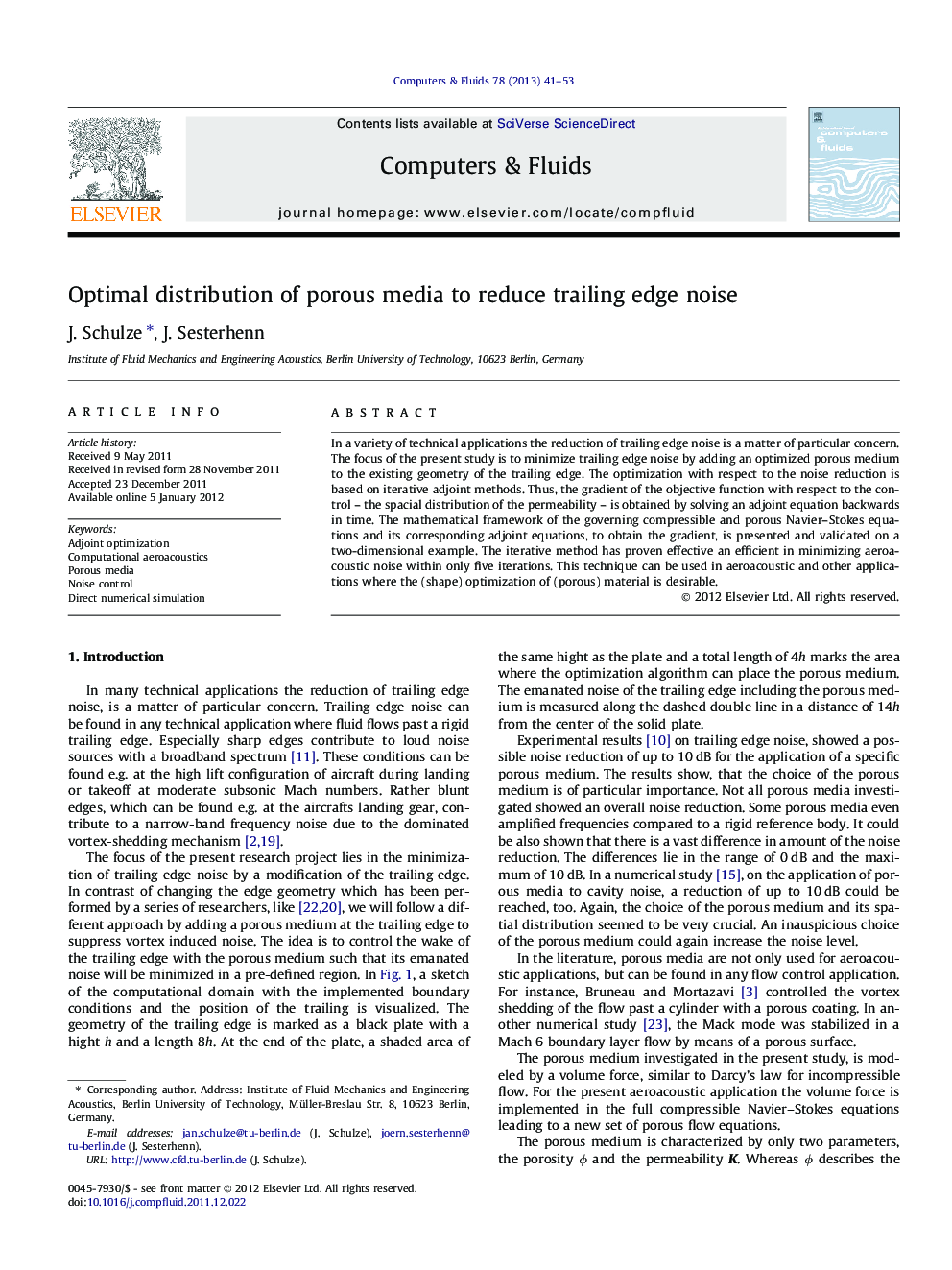| Article ID | Journal | Published Year | Pages | File Type |
|---|---|---|---|---|
| 756647 | Computers & Fluids | 2013 | 13 Pages |
In a variety of technical applications the reduction of trailing edge noise is a matter of particular concern. The focus of the present study is to minimize trailing edge noise by adding an optimized porous medium to the existing geometry of the trailing edge. The optimization with respect to the noise reduction is based on iterative adjoint methods. Thus, the gradient of the objective function with respect to the control – the spacial distribution of the permeability – is obtained by solving an adjoint equation backwards in time. The mathematical framework of the governing compressible and porous Navier–Stokes equations and its corresponding adjoint equations, to obtain the gradient, is presented and validated on a two-dimensional example. The iterative method has proven effective an efficient in minimizing aeroacoustic noise within only five iterations. This technique can be used in aeroacoustic and other applications where the (shape) optimization of (porous) material is desirable.
